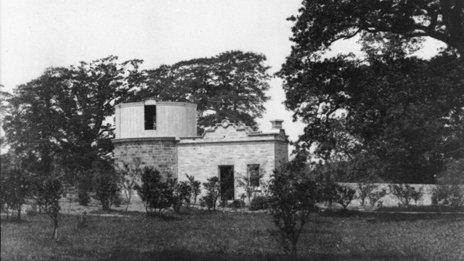Penllergare Valley Woods observatory to be restored
- Published

John Dillwyn Llewelyn and his daughter took photos of the moon from 1857
An observatory built by a 19th Century photography pioneer who took some of the earliest images of the moon is to be part of £2.9m restoration work.
The building in Penllergare Valley Woods on Swansea's edge was created in 1846 by John Dillwyn Llewelyn.
Swansea council has signed a 25-year lease with the Penllergare Trust, formed in 2000 to regenerate the area.
It is adding to Lottery funding the trust won to restore the once neglected valley and woodland.
Work on the observatory, a scheduled ancient monument, is expected to take 18 months.
Llewelyn an industrialist who was also fascinated with horticulture, was a founder member of the Royal Photographic Society.
After installing a telescope in the building, he and his daughter Thereza experimented with taking photos of the moon from 1857. His efforts led to the site becoming a local hub for stargazing.
Penllergare Trust chairman Terry Jones said: "The observatory is the scientific legacy of John Dillwyn Llewelyn.
"It has survived over half a century of neglect along with the picturesque designed landscape garden in the valley below.
"We're looking forward to bringing this nationally important historic structure back into good condition and conserving it for public benefit."
Located north of Swansea, the woods were once a famous gentry estate and home to Llewelyn, a philanthropist, whose "design, vision and influence" is said by the Heritage Lottery Fund (HLF) to be behind the landscapes described as picturesque and romantic.
For almost 50 years, according to the HLF, it was "neglected, vandalised and threatened by development".
Swansea council's cabinet member for regeneration Nick Bradley said: "The observatory building has a rich and fascinating history and its restoration forms part of what's going to be an exciting future for this much-loved beauty spot."
- Published13 September 2011